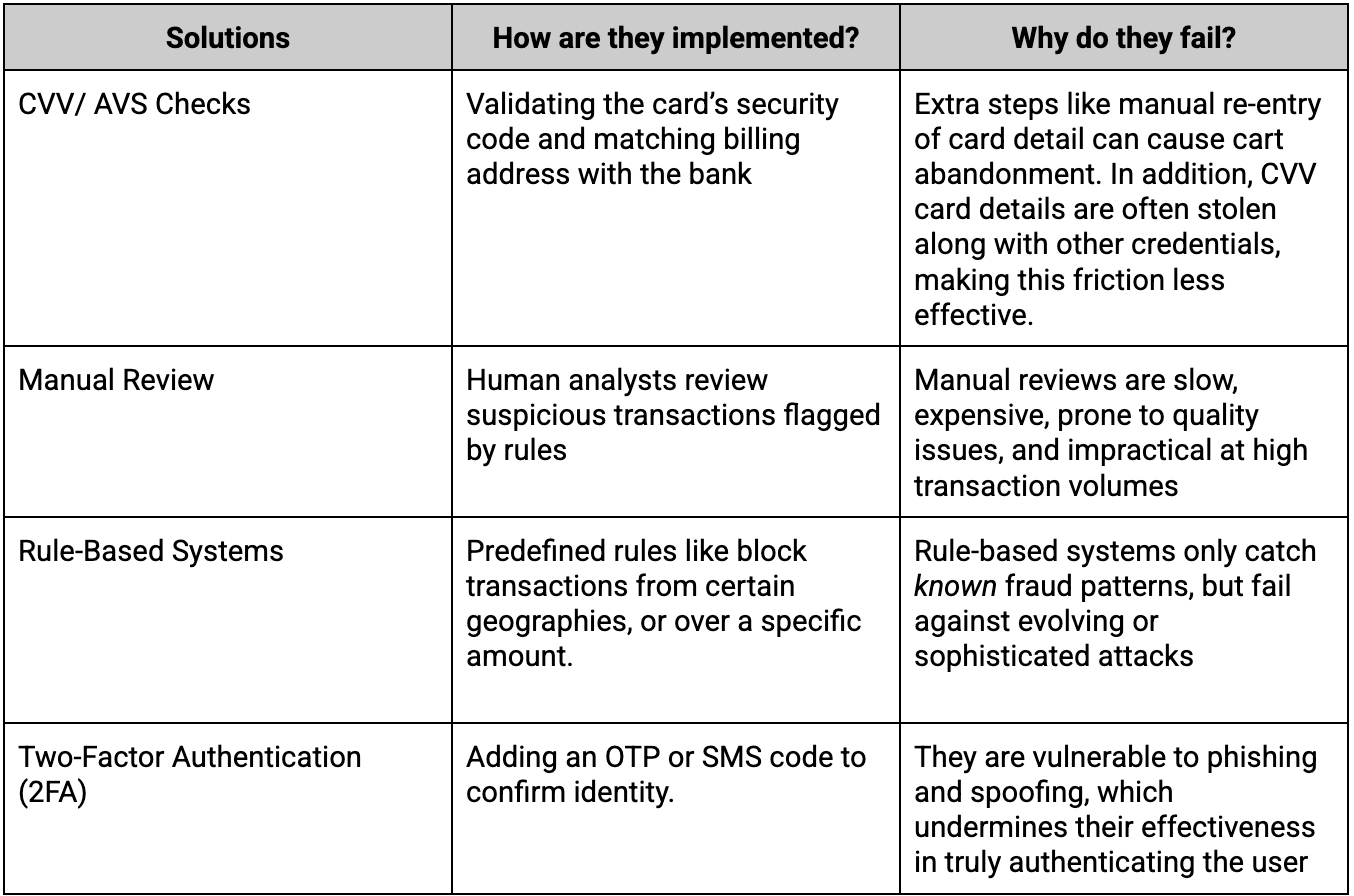Eliminating Checkout Abandonment in eCommerce
By
Dyneti
|
September 29, 2025
Background
Over the past decade, eCommerce has seen an unprecedented boom. With giants like Amazon and Walmart battling for dominance, and challengers such as Wish and Temu entering the fray, it’s clear that the 2010s and early 2020s have been defined by online retail. But as digital marketplaces expand, so too does the sophistication and scale of fraudulent activity targeting sellers, buyers, and platforms.
By 2025, global eCommerce fraud losses are expected to surpass $50 billion, with marketplaces standing out as prime targets. Fraudsters exploit policy gaps, platform weaknesses, and even consumer behavior to secure quick wins at the expense of legitimate customers. The cost of this fraud falls heavily on retailers , not just in the form of direct chargebacks, but also through reputational damage. To reduce the damages caused by fraud, marketplaces introduce security at checkout such as re-entering card details, CVV checks, zip code checks or identity verification using MFA that creates friction. That friction leads to cart abandonment, lost transactions, and, in some cases, customer churn. The result is a double hit for eCommerce retailers and comes in the form of revenue erosion from fraud and stunted growth from poor user experience.
Consumer Mindset
An eCommerce customer wants a shopping experience that is fast, seamless, and trustworthy. They expect quick browsing, easy checkout, and flexible payment options without unnecessary friction. At the same time, security is of paramount importance to this section of consumers shopping online. Customers need confidence that their data, payment methods and transactions continue to remain safe and secure. In a survey conducted by a major online retailer, customers mentioned that sophisticated technologies at checkout that are secure, easy and hassle gives them the confidence that the company is invested in data and information security and is committed to keeping fraudsters off the platform.
Types of Fraud and Solutions in eCommerce
The most common types of eCommerce fraud exploits the the most trusted consumer experience for illegitimate gains
- Stolen Credit card Fraud: The most common type in eCommerce, where stolen card numbers are used online without the physical card, since it is a CNP (card not present) transaction.
- Account Takeover (ATO): Fraudsters hijack customer accounts to make unauthorized purchases, often after phishing or credential stuffing attacks that capture login credentials
- Friendly Fraud: Customers make legitimate purchases but later dispute them with their bank, falsely claiming they didn’t authorize the charge.
- Synthetic Identity Fraud: Criminals create fake identities using real and fabricated data to open new accounts and exploit them for purchases
Why do traditional fraud solutions fail in eCommerce?

In short, traditional fraud solutions were built for card-present, in-store transactions. In eCommerce where speed, scale, and seamless experience matter they either create too much friction or leave dangerous gaps open for exploitation by fraudsters
How does Dyneti’s solution come in handy?
Dyneti delivers a modern solution that enhances both security and conversion. By leveraging AI-powered card scanning through a device’s camera, it eliminates the need for manual entry, enabling faster checkouts and reducing abandonment rates. Integrated at both card addition and checkout, Dyneti detects fraud at the source, verifying whether a card is genuine before it can be used. This not only blocks bad actors early but also generates trusted signals for legitimate accounts, paving the way for a frictionless checkout experience. Dyneti seamlessly integrates with mobile apps and eCommerce sites, providing a consistent and secure experience across platforms. With PCI DSS compliance and robust data encryption, it allows retailers to uphold the highest standards of security while still prioritizing customer convenience.
The result: higher conversion rates, fewer fraudulent transactions, and happier customers.
